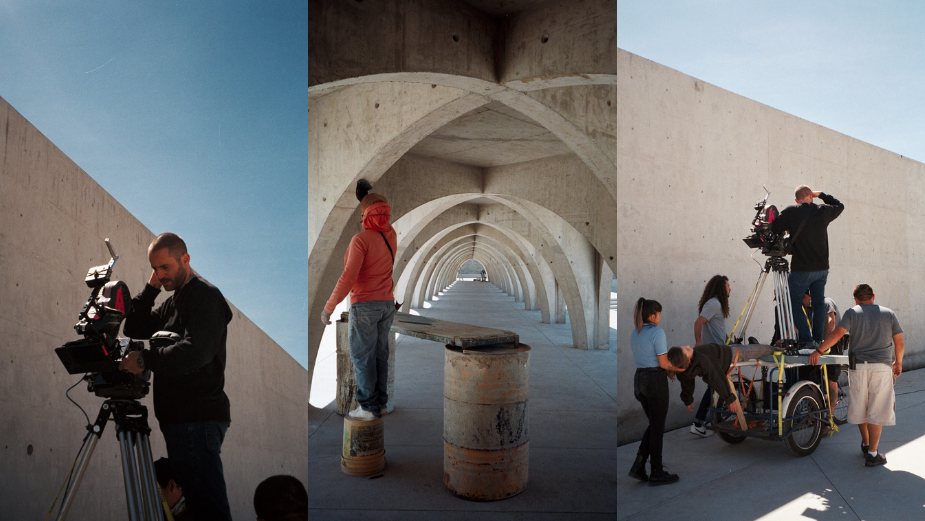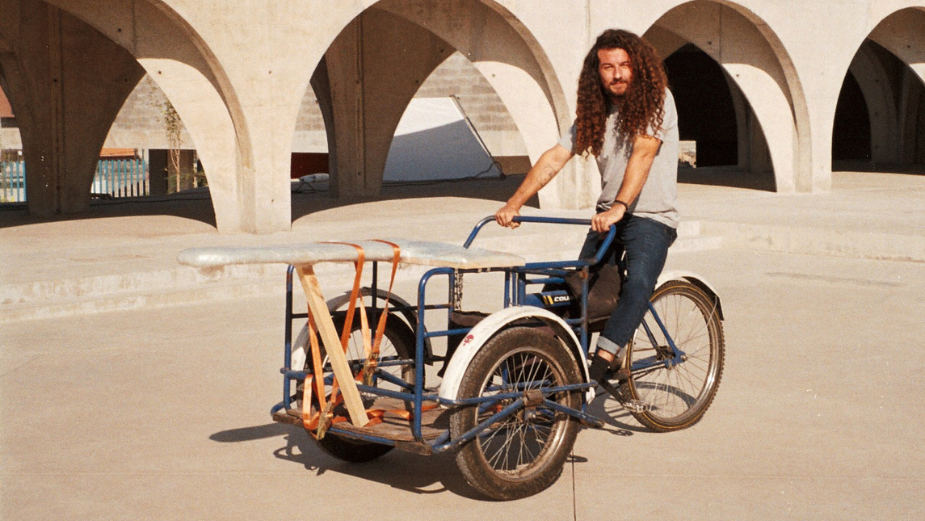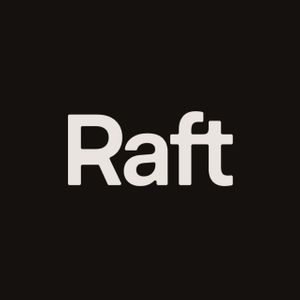
LBB Film Club: Absence

‘Absence’ is a short film from Raft Content’s director Arnaldo Iñigo, who also executive produced and edited the film. Shot on 16mm film entirely on location in Mexico City, the short is a haunting audio-visual exploration of love and mourning, inspired by the life of Arnaldo’s grandmother, who lost two children in separate tragic accidents. ‘Absence’ is set to two tracks: ‘Flesh and Bone’ by Black Math and ‘A ghost’ by Luke Atencio, and also features spoken word by Tom O’Bedlam. The film, which contains striking, symbolic visuals and emotive performance art from dancer Tania Solomonoff, is a presentation of grief as a process of reflection and acceptance, chronicling the need to reconcile with the purpose of life.
Speaking to LBB’s Ben Conway, Arnaldo discusses the rich visual and narrative opportunities within the themes of love and loss, and his own personal connection with the subject matter, as well as the process of finding some unique brutalist shooting locations and drawing palpable pain, torment and strength from the performers on set.
LBB> ‘Absence’ is a film inspired by your grandmother. What made you want to explore her story?
Arnaldo> The concept of death and the depth of grief that follows has always been both fascinating and terrifying to me. It’s an unspoken pact: to love is to experience grief at some point. In Mexico, we intertwine these two things by celebrating them in ‘Dia de Muertos’, or ‘The Day of the Dead’, which is actually the day I was born. It’s an annual remembrance of loved ones who have passed away and, as a child, I was always baffled by its duality. Celebration and grief.
Among the people our family honours each year are Hector and Rogelio, two of my grandmother’s children who died very young, in two separate incidents. This led to a number of conversations with my grandmother over the years about loss, despair and her powerlessness in the face of losing her sons. To lose a child feels like a disruption in the natural order of things. ‘Absence’ became a deeply personal exploration of love and loss and how a mother navigates life in the face of extreme sorrow.
LBB> What approach did you have in portraying love and grief in a visual format? Did you have some key imagery or metaphors you knew you wanted to use from the beginning?
Arnaldo> I made the decision early on that we would never see the mother and son together. Instead, I wanted to create the feeling of this connection, ripped apart by death, by cross-cutting between different scenes. The first image that stuck with me was one of a child fighting against death’s desire to take away his hopes and dreams. This developed into the scene where the child has a stand-off with death personified. Death holds his arm and hand out, the child presses his head into the hand and pushes back. It’s also a nice reflection of a childish game, the child can never quite reach as far as the adult. It’s an image portraying both powerlessness and sombre playfulness.
Wrapped up in the grief there was also a lot of blame passed back and forth within the family. When Rogelio died (the boiler broke and he died from gas asphyxiation in the shower) his seven siblings were still in the house. This created a melting pot of emotions. They were all children, trying to process grief while blaming one another, and they withdrew socially. This became the scene where the children sit with head coverings, pointing fingers at one another, isolated in their own pain.

LBB> Why did you choose to shoot with 16mm? What does it add to the film and what challenges did it pose?
Arnaldo> I felt that 16mm was the perfect middle ground for this film. 8mm has this retro charm about it, while 35mm is very high-quality. Using 16mm gives a pronounced grittiness, it’s imperfect and grainy and visually reflective of the film’s content. In terms of challenges, I love the idea of being presented with limitations. Working with a finite amount of physical film meant that I needed to plan each scene with surgical detail since we couldn't do multiple takes. I had a timeline so I knew exactly how long each scene or sequence was going to take and this allowed us to film just what was needed.
LBB> How was your location scouting process? Where did you shoot the film? And where did you find the concrete arches - those shots are beautiful!
Arnaldo> The first image that stuck with me was the child facing down with death personified, so I thought it would make sense to use a brutalist location, which is where the arches location came in. The rawness of the material, the sense of mass, weight and scale, paired with the beauty of the arches created a powerful image. Though it wasn’t easy to find! Our location manager, Franco, is always looking for fresh, unseen locations and he came across an article that mentioned an unfinished architectural project. Through his connections and the magic of Google Maps, he managed to locate it and we were the first to film there. Since then, it has actually been used numerous times. It did present a lot of potential pitfalls to begin with as it was under construction, but our location manager and producer managed to address them all and it was an incredible place to shoot.
One of the other locations we filmed at was an old house in Santa Maria de la Ribera, a neighbourhood in Mexico City. The house has this incredible character about it, full of different textures, patterns, furniture and colours that fit the sombre vibe of the film. The owner of the house still lives there, so what you see in the film is mostly his own furniture and decorations.

LBB> What was it like working with your protagonist Tania Solomonoff? What direction did you give her and what did she bring to the role?
Arnaldo> Tania is a master at addressing emotions and interpreting these through movement and actions. Her approach is very academic and presents a complex way of looking at the poetry of movement. She is part of the National System of Art Creators of Mexico and her training is influenced by identity, collective memory, different socio-political contexts and languages. Currently, dance, performance, therapeutic and somatic techniques are all integrated into her production, as well as integrating graphic media and audiovisual mediums.
I needed Tania’s character to convey a great deal of emotion not only through movement but in those moments of stillness, too. We also needed to portray contrasting emotions: the deep immovable pain of loss posited against a disturbingly manic projection of torment. Tania and Ana, our movement coach, worked together to create a heart-stopping performance, often working with Tania’s reaction to specific words: suffering, loss, grief, and hope - allowing her the space to experiment with her reactions to various sounds.
The ending was never intended to be happy, but rather presenting the mother’s movement into acceptance, marked by her calm withdrawal, to which Tania brought grace and power.
LBB> You also edited the film, which is quite rhythmic and syncs to the music, how was that process?
Arnaldo> Since we were shooting on film I had to ensure that the sequences were as tight as possible. It then made sense for me to also do the edit as I was already so familiar with the structure. When I chose the music, I opted for a track that presented interesting nuances - drops, pauses, reversed effects - which in turn informed much of the editing.
('Absence' - Behind the scenes)
LBB> The music and spoken word piece support the film’s rhythm, how did you find or create these pieces?
Arnaldo> The music needed to present an enigmatic, sombre and powerful tone. Narratively, it had to follow quite an interesting journey of contrasts - from subtle verses to a powerful orchestral climax. So sound design was paramount to conveying the emotions of this film. We decided to partner with Defacto Sound in New York, who often work with HBO, Netflix and the Discovery Channel, so they are at the top of their game and just what we needed. Composing in parallel with the editing was, I felt, what would make or break this piece, so we bounced ideas around with Defacto and they created an incredible sonic landscape from the ground up.
LBB> There are some shots where the young boy appears to be floating, how did you achieve this visual?
Arnaldo> This shot was actually a last-minute addition and required us to really think on our feet. We ended up borrowing a tricycle from a local delivery guy and our incredible team put together a platform that the boy could lie down on. Our grip then cleverly reworked the position of the camera and with some careful editing this gave us our ‘floating’ child.

LBB> Do you have a favourite shot or sequence in the film? Can you tell us a bit about how you created it?
Arnaldo> The last shot is my favourite - Tania looking at the horizon, a slow zoom focusing on her expression. She is standing still but the strength in her gaze is palpable.
Initially, this presented a challenge since my direction to Tania was clear, but was based around adjectives: “You are sad looking at the horizon,” which is purely a descriptive way of looking at the scene and only touches the tip of the iceberg. We were missing something. Then I remembered the advice from a book called ‘Directing Actors’ by Judith Weston. In this book, Judith explains how important is to use action verbs when directing actors as these have both an emotional and a physical component. These action verbs often help to establish the emotional transaction of the scenes and they deal with the experience itself rather than the conclusion of the experience. In this case, Tania and I spoke about what it is ‘to grieve’ and ‘to reminisce’ and the result is the last shot of the film.
LBB> Are you looking to create more short films with Raft? What are your goals for 2023?
Arnaldo> Definitely! We are passionate about film and advertising and have a tight-knit team of production experts who are as excited about the craft as we are. Everyone at Raft understands the ecosystem that enables magic moments in film to happen and we are currently talking with a couple of top-tier directors and ambitious producers who are as ambitious as us. We can’t wait to show them the possibilities Mexico has to offer!








